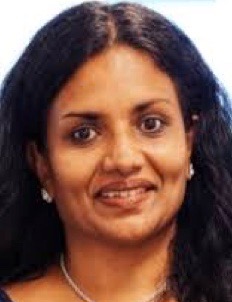Co-Located Conference AgendasLab-on-a-Chip and Microfluidics: Companies, Technologies and Commercialization | Lab-on-a-Chip and Microfluidics: Emerging Themes, Technologies and Applications | NGS, SCA, SMA & Mass Spec: Research to Diagnostics 2016 | Point-of-Care Diagnostics & Global Health World Congress 2016 | 

Monday, 26 September 201609:00-12:00 Microfluidics and Lab-on-a-Chip (LOAC) for
Point-of-Care (POC) Diagnostics Applications: Technologies,
Applications, Research Trends [Pre-Conference Training Course]
Presented by Dr. Holger Becker, microfluidic ChipShop GmbH.
Separate Registration Required for this Pre-Conference Training Course. | 12:00-14:30 Luncheon Training Course: Basic Principles in
Lab-on-a-Chip (LOAC) Technologies for the Study of Circulating
Biomarkers: Applications in Liquid Biopsies [Pre-Conference Training
Course]
Presented by Professor Steve Soper, Professor and Director, University of North Carolina-Chapel Hill.
Separate Registration Required for this Training Course. | 14:30 | Conference Registration, Conference Materials Pick-Up and Networking | |
Session Title: Conference Plenary Session -- Convergence of Technologies in Microfluidics, Diagnostics and Single Cell Analysis |
| | 15:30 |  | Keynote Presentation The Personalized Health Care Environment: How in vitro Diagnostics, Mobile Health and Medical Devices will Converge to Improve Health Care
Alan Wright, Chief Medical Officer, Roche Diagnostics Corporation, United States of America
|
| 16:00 |  | Keynote Presentation Digital Microfluidics: A Platform Whose Time Has Come
Aaron Wheeler, Canada Research Chair of Bioanalytical Chemistry, University of Toronto, Canada
Digital microfluidics is a fluid-handling technique in which droplets
are manipulated by electrostatic forces on an array of electrodes coated
with a hydrophobic insulator. In this talk, I will present recent
results from my group’s work with digital microfluidics, with an
emphasis on the topics covered in this unique venue. Specifically, I
will demonstrate how digital microfluidics is particularly well-suited
for Lab on a Chip applications, given its ability to automate diverse
laboratory processes on a generic, programmable platform. Likewise, I
will report on our work using digital microfluidics for Point of Care
Diagnostics and Global Health, reporting on the results of a field trial
for measles and rubella diagnostics at refugee sites in Kenya. Finally,
I will describe how digital microfluidics is emerging as a useful tool
for Single-Cell Analysis and for integration with Mass Spectrometry to
answer questions about cell heterogeneity and cell-cell communication.
Through these examples, I will make the case that digital microfluidics
is emerging as a useful new tool for the next generation of analytical
techniques, across a wide range of applications. |
| 16:30 |  | Keynote Presentation Microfluidics and Sensors: New Tools for Real-Time Clinical Monitoring
Martyn Boutelle, Professor of Biomedical Sensors Engineering, Imperial College London, United Kingdom
A goal for modern medicine is to protect vulnerable tissue by monitoring the patterns of changing physical, electrical and chemical changes taking place in tissue - ‘multimodal monitoring’. Clinicians hope such information will allows treatments to be guided and ultimately controlled based on the measured signals. Microfluidic lab-on-chip devices coupled to tissue sampling using microdialysis provide an important new way for measuring real-time chemical changes as the low volume flow rates of microdialysis probes are ideally matched to the length scales of microfluidic devices. Concentrations of key biomarker molecules can then be determined continuously using either optically or electrochemically (using amperometric, and potentiometic sensors). Wireless devices allow analysis to take place close to the patient. Droplet-based microfluidics, by digitizing the dialysis stream into discrete low volume samples, both minimizes dispersion allowing very rapid concentration changes to be measured, and allows rapid transport of samples between patient and analysis chip. This talk will overview successful design, optimization, automatic-calibration and use of both continuous flow and droplet-based microfluidic analysis systems for real-time clinical monitoring, using clinical examples from our recent work. |
| 17:00 |  | Keynote Presentation High-Performance Rapid Diagnostic Tests
Bernhard Weigl, Director, Center for In-Vitro Diagnostics, Intellectual Ventures/Global Good-Bill Gates Venture Fund, United States of America
Lateral flow and similar rapid diagnostic assays (LFAs) are easy to use
and manufacture, low cost, rapid, require little or no equipment to
operate, and do not need to be refrigerated. However, they are generally
not considered to be very sensitive or able to provide a quantitative
result. Our group believes that this lack of sensitivity is not a
fundamental property of LFAs but rather a consequence of the way they
are developed, manufactured, and marketed. Historically, most lateral
flow tests were developed and optimized by relatively small
manufacturers with limited R&D capabilities and budgets, and were
generally used only for analytical targets prevalent at high
concentration in patient’s samples that were relatively easy to measure.
In contrast, our group’s mission is to develop LFA-based assays for use
in global health applications that are as sensitive as the best
conventional diagnostic assays (in some cases even better) while
retaining all their cost, simplicity, and usability advantages. |
| 17:30 |  | Keynote Presentation Technologies for Personalizing Cancer Immunotherapies
James Heath, Elizabeth W. Gilloon Professor of Chemistry, California Institute of Technology (CalTech), United States of America
Cancer immunotherapy, which has taken virtually all aspects of oncology by storm over the past few years, is based upon using cellular or molecular therapies to promote tumor cell/immune cell interactions. At the heart of this therapy are the T cells that actually do the tumor cell killing, and the tumor antigens that are recognized by those T cells. Recent work has shown that neoantigens play critical roles in many immunotherapy successes. Neoantigens are tumor antigens that are fragments of mutated proteins expressed by the cancer cells, and contain those point mutations. They are presented in the clefts of major histocompatibility molecules (MHCs) by many of the cells in the tumor, where they may be recognized by neoantigen-specific T cell populations. In this presentation, I will discuss how various micro and nanotechnologies are being harnessed to identify, for a given patient which neoantigens are actively recruiting T cells into the tumor, and to carry out a deep molecular analysis of those neoantigen-specific T cells. I will further discuss how that information can then be harnessed for personalized cancer immunotherapies in the form of neoantigen-based vaccines, or engineered T cell receptor adoptive cell transfer therapies.
|
| 18:00 |  | Keynote Presentation Wearable Eccrine Sweat Biosensing: Uncovering The Real Challenges That Lie Ahead
Jason Heikenfeld, Professor and VP Operations, UC Office of Innovation, University of Cincinnati, United States of America
Despite the many ergonomic advantages of eccrine perspiration (sweat) compared to other biofluids (particularly in “wearable” devices), sweat remains an underrepresented source of biomarker analytes compared to the established biofluids blood, urine, and saliva. Upon closer comparison to other non-invasive biofluids, the advantages may even extend beyond ergonomics: sweat might provide superior analyte information. A number of challenges, however, have historically kept sweat from its place in the pantheon of clinical samples. These challenges include very low sample volumes (nL to µL), unknown concentration due to evaporation, filtration and dilution of large analytes, mixing of old and new sweat, and the potential for contamination from the skin surface. More recently, rapid progress in “wearable” sweat sampling and sensing devices has resolved several of the historical challenges. However, this recent progress has also been limited to high concentration analytes (µM to mM) sampled at high sweat rates (>1 nL/min/gland, e.g. athletics). Progress will be much more challenging as sweat biosensing moves towards use with sedentary users (low sweat rates or not sweating at all) and/or towards low concentration analytes (pM to nM). Fortunately, none of the remaining challenges appear to be fundamentally blocking, and scientific and engineering innovations have the opportunity to enable broader application of sweat biosensing technology. |
| 18:30 |  | Keynote Presentation The Challenge in Building Phenotype Body-on-a-Chip Models for Toxicological and Efficacy Evaluations in Drug Discovery as well as Precision Medicine
James Hickman, Professor, Nanoscience Technology, Chemistry, Biomolecular Science and Electrical Engineering, University of Central Florida; Chief Scientist, Hesperos, United States of America
The utilization of human-on-a-chip or body-on-a-chip systems for toxicology and efficacy that ultimately should lead to personalized, precision medicine has been a topic that has received much attention recently. Key characteristic needed for these systems are the ability for organ-to-organ communication in a serum-free recirculating medium and incorporation of induced pluripotent stem cells that allow for understanding genetic variation as well as to construct systems utilizing stem cells from diseased patients and also from individuals. Additional characteristics that have been discussed are functional readouts that would enable non-invasive monitoring of organ health and viability for chronic studies that now are only possible in animals or humans at this time. In addition, in order to achieve wide spread adoption of these technologies they should also be low cost, easy to use and reconfigurable to allow flexibility for platforms to be examined with small variation. Our group, in collaboration with Dr. Michael Shuler from Cornell University, has been constructing these systems with up to 6 organs and have demonstrated long-term (>28 days) evaluation of drugs and compounds, that have shown similar response to results seen from clinical data or reports in the literature. We have accomplished the construction of these systems utilizing mostly 2D systems in serum-free medium with functional readouts that employs a pumpless platform that enables ease of use of these assays. Our group’s ability to control the interface between the biological and non-biological components in these systems has enabled the straightforward integration of multiple cell types in the same platform. Results with the functional multi-organ systems will be presented as well as results of five workshops held at NIH to explore what is needed for validation and qualification of these systems by the FDA and EMA. |
| 19:00 | Conference Opening Reception with Beer, Wine and a Light Dinner Sponsored by Veryst Engineering, LLC | 20:00-22:00 Dinner Training Course: Microfluidics for 3D-Printing and Biofabrication: Technologies and Applications [Pre-Conference Training Course]
Presented by Professor Albert Folch, University of Washington.
Separate Registration Required for this Training Course. |
Tuesday, 27 September 201607:45 | Conference Registration, Conference Materials Pick-Up, Morning Coffee and Breakfast Pastries in the Exhibit Hall | |
Session Title: Trends in Point-of-Care (POC) Diagnostics and Global Health |
| | 09:00 |  | Keynote Presentation Rapid Screening for Infectious Diseases Using Paper-Analytic Devices
Charles Henry, Professor and Chair, Colorado State University, United States of America
Infectious diseases are a major threat to human and animal health worldwide, and are responsible for killing millions of people each year and costing billions of dollars in economic losses. From 1995-2008, the estimated losses from zoonotic infectious diseases was $120B. As a result, there has been a long standing interest in rapid screening tools that enable detection and even identification of bacterial and viral pathogens. Traditional microbiological methods rely on culturing, which, despite being slow and time intensive, are effective for those species which can be readily cultured. Molecular techniques such as RT-PCR and ELISA have improved accuracy and speed but are rarely performed at the point of need, largely due to the need for multiple processing steps and benchtop instrumentation. We have been developing new methods for molecular detection of infectious diseases making use of recent developments in paper-based analytic devices. Multiple methods for detecting infectious diseases using paper-based devices will be presented. The first relies on detection of enzymes produced by bacteria using electrochemical paper-based analytic devices (ePADs). ePADs are attractive because they can provide high sensitivity with good selectivity using simple, portable instrumentation like handheld glucometers. Discussion will focus on detection of Salmonella and E. Coli using this approach. The second method detects viral and bacterial DNA colorimetrically using peptide nucleic acids coupled with silver nanoparticles in a simplified aggregation assay. Examples of detecting DNA from human papilloma virus, MERS, and tuberculosis will be shown. |
| 09:30 | Printable Paper-Based Diagnostic Systems for Biomedical and Environmental Monitoring
John Brennan, Professor and Director, Biointerfaces Institute, McMaster University, Canada
The talk will focus on the development of printable components to produce bioactive paper sensors with a range of capabilities, including integrated sample preparation, biorecognition, amplification and readout technologies that can allow multi-step reactions on paper with ultra-sensitive detection capabilities. | 10:00 | On the Hunt for Sub-standard Antibiotics in Africa with Paper-based Analytical Devices
Marya Lieberman, Professor, University of Notre Dame, United States of America
Every antibiotic has an allowed variation of the quantity of active pharmaceutical ingredients (APIs), generally running from 90%-120% of the stated API content. Products which fall outside of these quality standards can harm patients and contribute to development of drug-resistant pathogens, so there is a public health imperative to find them and get them out of the market. However, quantitative analysis of medicines in low resource settings is difficult. Most countries in Africa don't have a WHO-prequalified pharmaceutical analysis lab. Others have such a lab, but lack capacity for the broad market sampling necessary to detect poor quality products. Paper diagnostic devices could help to fill this gap in analytical capacity. We are working with pharmacists in Kenya and Malawi using paper test cards and a neural network image analysis program to detect falsified and degraded products. However, these cards could not directly quantify active ingredient content, so they could not directly detect substandard products. We recently designed a new paper test card to quantify the content of beta lactam antibiotics in pills. I'll describe the chemistry in detail and discuss how we are implementing these paper analytical devices in a field setting to replace HPLC analysis. We are also exploring local manufacture of the paper test cards in Kenya. | 10:30 | Coffee Break and Networking in the Exhibit Hall: Visit Exhibitors and Poster Viewing | 11:15 |  | Keynote Presentation A Platform to Digitize Biology: A Potential Pathway to Exponential Medicine
John T McDevitt, Professor, Division of Biomaterials, New York University College of Dentistry Bioengineering Institute, United States of America
A major missing link in healthcare today is the absence of the Internet
of Biomarkers (IOB); that is, consumer-facing clinical testing
capabilities with intuitive and motivating interfaces accessible to
individuals, pharmaceutical scientists, and care-providers. While
numerous physical silicon-transducers (accelerometers, gyroscopes, GPS)
are already integrated into smart phones, one extreme deficiency today
is the lack of health-connected biomarker measurements. Indeed, up to 70
percent of current medical decisions are made using diagnostic tests
performed in traditional health care settings, using phlebotomists,
remote laboratories, and delayed reporting. This inefficient flow of
diagnostic information stifles arrival of exponential medicine.
Likewise, for patients to actively manage their own wellness, we must
surmount this biomarker technology gap. |
| 11:45 |  | Keynote Presentation EFIRM Liquid Biopsy (eLB)
David Wong, Felix and Mildred Yip Endowed Chair in Dentistry; Director for UCLA Center for Oral/Head & Neck Oncology Research, University of California-Los Angeles, United States of America
Liquid biopsy is a rapidly emerging field to address this unmet clinical need as diagnostics based on cell-free circulating tumor DNA (ctDNA) can be a surrogate for the entire tumor genome. The use of ctDNA via liquid biopsy will facilitate analysis of tumor genomics that is urgently needed for molecular targeted therapy. Currently, most targeted approaches are based on PCR and/or next generation sequencing (NGS) for liquid biopsy applications with performance concordance in the 70-80% range with biopsy-based genotyping. We have developed a liquid biopsy technology “Electric Field Induced Release and Measurement (EFIRM)- Liquid Biopsy (eLB)” provides the most accurate detection that can assist clinical treatment decisions for the most common subtype of lung cancer, non-small cell lung cancer (NSCLC), with tyrosine kinase inhibitors (TKI) that can extend the disease progress free survival period of these patients. eLB can detection ctDNA at single copy level whereas ddPCR detects ctDNA a minimum of 10 copy number. In addition eLB requires only 40 µl of sample volume, no sample processing, reaction time is 15min and can be performed at the point-of-care or high throughput reference lab using plasma or saliva. In two blinded independent clinical studies, eLB detects actionable EGFR mutations in NSCLC patients with >90% concordance with biopsy-based genotyping. eLB is minimally/ non-invasive detecting the most common EGFR gene mutations that are treatable with TKI such as Gefitinib or Erlotinib to effectively extend the progression free survival of lung cancer patients. eLB offers both a high throughput reference lab as well as point-of-care (POC) platform that can provide real time feedback in a physician’s office. |
| 12:15 | Networking Lunch in the Exhibit Hall: Visit Exhibitors and Poster Viewing | |
Session Title: Technologies and Workflows that Drive the Realization of POC Diagnostics Potential |
| | 13:30 |  Technology Spotlight: Technology Spotlight:
High Performance Field-based Immunosensor Platforms Based on Next-Generation Lateral Flow Technology
Brendan O' Farrell, President, DCN Diagnostics
A traditional continuum exists in diagnostic platform performance that ranges from highly accurate methods that require infrastructure and a centralized approach to testing to less accurate technologies that can be used in a decentralized or point of care testing strategy and that require little to no supporting infrastructure. Lab-based molecular diagnostic technologies have traditionally occupied one end of that scale, while lateral flow has dominated the other end. Other testing methodologies such as ELISA, Western Blot and even more novel “point of care” molecular platform technologies tend to fall between these two extremes. However, few immuno-sensor or point of care molecular chips or sensors match the combination of utility, performance, manufacturability, availability, supplier ecosystem and regulatory and market acceptance that lateral flow assays demonstrate. Over the last decade, advances in technology, manufacturing processes and device design have allowed for significant evolution in the lateral flow platform and adoption in applications that would not previously have been considered for this sensor type. In this presentation, the drivers of improved performance in next generation lateral flow based sensor platforms will be discussed, and case studies will be shown that demonstrate sensitivity, quantification, ruggedness and multiplexing combined with aesthetics and user friendliness designed to drive adoption and minimize errors in the field.
| 14:00 | Instrument-Free Point-of-Care Molecular Detection of Zika Virus
Changchun Liu, Research Associate Professor, University of Pennsylvania, United States of America
The recent outbreak of Zika virus (ZIKV) infection in the Americas and its devastating impact on fetal development have prompted WHO to declare the ZIKV pandemic as a Public Health Emergency of International Concern. Rapid and reliable diagnostics for ZIKV are vital since ZIKV-infected individuals display no symptoms or nonspecific symptoms similar to other viral infections. Since immunoassays lack adequate sensitivity and selectivity and are unable to identify active state of infection, molecular diagnostics is an effective means to detect ZIKV soon after infection and throughout pregnancy. In this talk, I will present our recent effort towards the development of instrument-free point-of-care molecular detection of ZIKV, including: 1) highly sensitive isothermal amplification assay for ZIKV, 2) multifunctional isothermal reactor chip for ZIKV detection in saliva sample; 3) electricity-free smart cup for isothermal amplification. | 14:30 | Nanocytology: Personalizing Cancer Risk Assessment in Primary-Care Setting
Hariharan Subramanian, Research Assistant Professor; Chief Technology Officer, NanoCytomics, Northwestern University, United States of America
Alterations in higher order chromatin structure are some of the earliest events in carcinogenesis and a marker of field carcinogenesis. These nanoscale markers can be detected by an emerging technology, nanocytology. Clinical studies have shown that the analysis of chromatin nanoarchitecture of cells obtained from easily accessible surrogate tissue sites via nanocytology has a remarkable accuracy for early cancer. This may allow increasing the detection rate of significant pre-neoplastic or neoplastic lesions while reducing overdiagnosis. Data from multi-institutional clinical trials has demonstrated that nanocytology has the potential to become a new platform for cancer screening broadly applicable to a number of neoplasms including lung cancer screening via buccal nanocytology, colon cancer screening via rectal nanocytology, and ovarian cancer screening via endocervical nanocytology. | 15:00 | Current Challenges and the Future Outlook on U.S. Regulation of Point-of-Care Tests: Opportunities and Strategies
James Boiani, Partner, Epstein Becker & Green, P.C., United States of America
The public health benefits of Point-of-Care Testing (POCT) are unquestionable, but significant regulatory hurdles stand between new innovations and the patients whom they could benefit. In this presentation we’ll discuss current challenges in the premarket review of POCT, and the future outlook for regulatory reforms. We’ll also discuss regulatory opportunities that exist in the POCT market, as well strategies for overcoming regulatory hurdles and getting promising tests into hospitals, urgent care centers, physician offices, and clinics. | 15:30 | Coffee Break and Networking: Visit Exhibitors and Poster Viewing | |
STRATEC Consumables Symposium on Innovations in Microfluidics and Lab-on-a-Chip and their Impact on Life Sciences and Diagnostics | Session Sponsors |
| | 16:00 | Introduction to the STRATEC Consumables Symposium and Topics Addressed in 2016 | 16:15 |  | Keynote Presentation Microfluidic Printing: From Combinatorial Drug Screening to Artificial Cell Assaying
Tingrui Pan, Professor, Department of Biomedical Engineering, University of California-Davis, United States of America
Microfluidic impact printing has been recently introduced, benefiting from the nature of simple device architecture, low cost, non-contamination, scalable multiplexability and high throughput. In this talk, we will review this novel microfluidic-based droplet generation platform, utilizing modular microfluidic cartridges and expandable combinatorial printing capacity controlled by plug-and-play multiplexed actuators. Such a customizable microfluidic printing system allows for ultrafine control of the droplet volume from picoliters (~10pL) to nanoliters (~100nL), a 10,000 fold variation. The high flexibility of droplet manipulations can be simply achieved by controlling the magnitude of actuation (e.g., driving voltage) and the waveform shape of actuation pulses, in addition to nozzle size restrictions. Detailed printing characterizations on these parameters have been conducted consecutively. A multichannel impact printing system has been prototyped and demonstrated to provide the functions of single-droplet jetting and droplet multiplexing as well as concentration gradient generation. Moreover, several enabling chemical and biological assays have been implemented and validated on this highly automated and flexible printing platform. In brief, the microfluidic impact printing system could be of potential value to establishing multiplexed droplet assays for high-throughput life science researchers.
|
| 16:35 |  | Keynote Presentation Nanopore Sequencing for Real-Time Pathogen Identification
Kamlesh Patel, R&D Advanced System Engineering and Deployment Manager, Sandia National Laboratories, United States of America
As recent outbreaks have shown, effective global health response to emergent infectious disease requires a rapidly deployable, universal diagnostic capability. We will present our ongoing work to develop a fieldable device for universal bacterial pathogen characterization based on nanopore DNA sequencing. Our approach leverages synthetic biofunctionalized nanopore structures to sense each nucleotide. We aim to create a man-portable platform by combining nanopore sequencing with advance microfluidic-based sample preparation methods for an amplification-free, universal sample prep to accomplish multiplexed, broad-spectrum pathogen and gene identification. |
| 16:55 |  | Keynote Presentation Polymer-based Nanosensors using Flight-Time Identification of Mononucleotides for Single-Molecule Sequencing
Steve Soper, Foundation Distinguished Professor, Director, Center of BioModular Multi-Scale System for Precision Medicine, The University of Kansas, United States of America
We are generating a single-molecule DNA sequencing platform that can
acquire sequencing information with high accuracy. The technology
employs high density arrays of nanosensors that read the identity of
individual mononucleotides from their characteristic flight-time through
a 2-dimensional (2D) nanochannel (~20 nm in width and depth; >100 µm
in length) fabricated in a thermoplastic via nano-imprinting (NIL). The
mononucleotides are generated from an intact DNA fragment using a
highly processive exonuclease, which is covalently anchored to a plastic
solid support contained within a bioreactor that sequentially feeds
mononucleotides into the 2D nanochannel. The identity of the
mononucleotides is deduced from a molecular-dependent flight-time
through the 2D nanochannel. The flight time is read in a label-less
fashion by measuring current transients induced a single mononucleotide
when it travels through a constriction with molecular dimensions (<10
nm in diameter) that are poised at the input/output ends of the flight
tube. In this presentation, our efforts on building these polymer
nanosensors using NIL in thermoplastics will be discussed and the
detection of single molecules using electrical transduction with their
identity deduced from the associated flight time provided. Finally,
information on the manipulation of single DNA molecules using
nanofluidic circuits will be discussed that takes advantage of forming
unique nano-scale features to shape electric fields for DNA manipulation
and serves as the functional basis of the nanosensing platform. |
| 17:15 |  | Keynote Presentation Rapid and Ultra-sensitive Diagnostics Using Digital Detection
Weian Zhao, Associate Professor, Department of Biomedical Engineering, University of California-Irvine, United States of America
We will present our most recent droplet based digital detection platforms for rapid and sensitive detections, which could find potential applications at the point-of-care (POC). |
| 17:35 |  | Keynote Presentation Fractionation and Analysis of Nuclear versus Cytoplasmic Nucleic Acids from Single Cells
Juan Santiago, Charles Lee Powell Foundation Professor, Stanford University, United States of America
Single cell analyses (SCA) have become powerful tools in the study heterogeneous cell populations such as tumors and developing embryos. However, fractionating and analyzing nuclear versus cytoplasmic fractions of nucleic acids remains a challenge as these fractions easily cross-contaminate. We present a novel microfluidic system that can fractionate and deliver nucleic acid (NA) fractions from the nucleus (nNA) versus the cytoplasm (cNA) from single cells to independent downstream analyses. Our technique leverages a selective electrical lysis which disrupts the cell’s (outer) cytoplasmic membrane, while leaving the nucleus relatively intact. We selectively extract, purify, and preconcentrate cNA using isotachophoresis (ITP). The ITP-focused cNA and nNA-containing nucleus are separated by ITP and fractionated at a bifurcation downstream and then extracted for off chip analyses. We will present example applications of this fractionation including qPCR and next generation sequencing (NGS) analyses of cNA vs. nNA. This will include preliminary NGS analyses of nuclear vs. cytoplasmic RNA fractions to analyze gene expression and splicing. We hypothesize that the robust and precise nature of our electric field control is amenable to further automation to increase throughput while removing manuals steps. |
| 17:55 |  | Keynote Presentation Chip-Scale Microfluidic Physiological Circulation Systems
Abraham Lee, Chancellor’s Professor, Biomedical Engineering & Director, Center for Advanced Design & Manufacturing of Integrated Microfluidics, University of California-Irvine, United States of America
There has been a recent surge in the development of microphysiological systems and organ-on-a-chip for drug screening and regenerative medicine. Over the years, drug screening has mostly been carried out on 2D monolayers in well plates and the drugs are not delivered through blood vessels as in vivo treatments. Through the advancement of microfluidics technologies, we have enabled the automation of biological fluids delivery through physiological vasculature networks that mimic the physiological circulation of the human body. The critical bottleneck is to engineer the microenvironment for the formation of vascularized 3D tissues and to also pump and perfuse the tissue vascular network for on-chip microcirculation. This in vitro model system can be used to screen cancer drugs by mimicking the delivery of the drugs through capillary blood vessels. On the other hand, microfluidics play an important role in the recent advances in liquid biopsy and the ability to specifically isolate and capture rare cells such as circulating tumor cells. These two technologies may go hand-in-hand to connect in vitro screening to in vivo screening with great potential in the development of personalized medicine.
|
| 18:15 | Close of STRATEC Consumables Symposium | 18:30 | Cocktail Reception for All Conference Attendees: Enjoy Beer, Wine, Appetizers and Network with Fellow Delegates, Speakers, Exhibitors in the Exhibit Hall and View Posters Sponsored by STRATEC Consumables GmbH | 20:00 | Close of Day 2 of the Conference. Continue Networking in Downtown San Diego (Trolleys to the City are Available Right Behind the Conference Venue). |
Wednesday, 28 September 201607:00 | Morning Coffee, Breakfast Pastries and Networking in the Exhibit Hall | |
Session Title: Implementation of POC Diagnostics -- Workflow, Commercial Offerings and Applications |
| | 08:00 | Reducing the Cost of Universal Neonatal Screening for Sickle Cell Anemia in Sub-Saharan Africa with Paper-based Diagnostics
Sergey Shevkoplyas, Associate Professor, University Of Houston, United States of America
Sickle cell anemia (SCA) is a major contributor to under-5 mortality in sub-Saharan Africa. The high cost of neonatal screening remains the primary barrier to identifying and treating affected infants. Even in regions with the highest incidence of the disease, >95% of the limited funds available to SCA screening programs is currently spent on testing healthy children. A potentially much less expensive alternative to testing all newborns, is to first identify mothers with the beta-sickle (ßS) allele (and therefore at risk of having an infant with SCA) using a low-cost screening test, and then only test their infants using the conventional laboratory methods to render the diagnosis. The simple, rapid, inexpensive, equipment- and electricity-free paper-based test recently developed in our laboratory could significantly reduce the cost of universal neonatal screening for SCA by enabling this two-stage screening strategy. | 08:30 | Accelerated Development of Multiplex Real-Time PCR by Preloaded Fluorogenic Reporters and Label-Free Mediator Probes
Felix von Stetten, Associate Director, Hahn-Schickard, Germany
A novel development strategy for multiplex real-time PCR is presented. The mastermix is augmented with fife standardized fluorogenic reports, optimized for their signal-to-noise ratio. The developer works with label-free mediator probes which he only needs to adopt to the target sequence. Performance of a the novel assay format is demonstrated by a pentaplex food panel as well as a quadruplex MRSA panel. | 09:00 | Open Microfluidic Platforms – A Pathway for Reducing Cost in POC Product Development
Holger Becker, Chief Scientific Officer, Microfluidic ChipShop GmbH, Germany
| 09:30 | Monitoring the Health of a Woman Across Time through Volatile Signatures
Barbara Smith, Assistant Professor, School of Biological and Health Systems Engineering, Arizona State University, United States of America
Infertility, ranked as the 5th highest global disability, affects an estimated 34 million women worldwide. One out of ten women in the United States has a problem getting or staying pregnant. If identified at an early stage, infertility is often treatable. Currently, however, there is no way to monitor real time shifts in fertility, as an individual ages. In this work, we present representative data from a human trial, monitoring healthy women across time. Our research is designed to identify volatile biomarkers, from non-invasive samples, for the development of next generation monitoring. | 10:00 | Point-of-Care Technologies in the Diagnosis of Breast Cancer in Both Resource-Rich and Poor Settings
Jane Brock, Chief of Breast Pathology, Brigham and Women’s Hospital, Harvard Medical School, United States of America
Breast Cancer care includes prevention, early detection, diagnostics and therapeutics. Therapeutic decisions are made based on traditional prognostic factors including tumor size, lymph node status, and factors obtained from pathological assessment including tumor grade, immuno-histochemical profile of Estrogen and Progesterone Receptor (ER and PR) and Her2/neu gene amplification status. Point of care technology is not currently used in this routine pathological assessment, but there are opportunities to both expedite diagnosis and reduce costs in both resource-rich and poor settings. This presentation will discuss alternative methods of tissue biopsy handling and imaging and prognostic marker evaluation that can obviate the need for expensive processing equipment (that is rarely available in resource-poor settings), and can allow for more rapid diagnosis compared with traditional tissue processing (within fifteen minutes rather than > 24 hours), and biomarker analysis (<2hrs rather than 8-24 hr). The application of these technologies, many already available or under development, can expedite the therapeutic decision making process making same-day diagnosis and therapeutic planning feasible in both resource-rich and poor settings, when the patient is still at the point of care location. | 10:30 | Coffee Break and Networking in the Exhibit Hall: Visit Exhibitors and Poster Viewing | 11:15 |  | Keynote Presentation Salivary Diagnostics for Cardiovascular Diseases and Cancers
Chamindie Punyadeera, Associate Professor, Institute of Health and Biomedical Innovation, Queensland University of Technology, Australia
|
| 11:45 | Integrated Sample-Prep and Immunoassay Array Platform for High-Sensitivity, Low-Complexity Multiplexed POC Diagnostics
Josephine Cunningham, Senior Scientist, Paratus Diagnostics, United States of America
The deficiency of point-of-care (POC) diagnostic devices on the market today is largely due to the unique combination of required specifications that most devices don’t satisfy. Here we report on a true POC disposable device that utilizes our Specimen Delivery System (Paratus SDS®) and attaches to a smartphone for multiplexed detection of gastroenteritis and diarrheal disease. The assay is performed by first collecting a stool sample with a nylon swab, and second, inserting the swab directly into the sensing cartridge where the biomarkers are moved downstream for subsequent detection through a chemiluminescent immunoassay. Importantly, the device can be used for a variety of applications by simply changing out the recognition elements within the immunoassay, and therefore has the potential to contribute to the movement towards more accessible diagnostics. | 12:15 | Networking Lunch in the Exhibit Hall: Visit Exhibitors and Poster Viewing | |
Session Title: The Convergence of POC Diagnostics into Minimally-Invasive Diagnostics Spaces |
| | 13:30 |  Technology Spotlight: Technology Spotlight:
Track-Etched and Track-Etched Nitrocellulose Composite Membranes: Tools for Point-of-Care Test Systems
Mike Harvey, Chief Science Officer, GVS Life Sciences
Microporous polymer membranes play an ever increasing role in rapid test systems. They can act as binding surfaces for both proteins and nucleic acids. Large pore membranes provide flow paths to deliver both samples and reagents to reaction sites. In addition different types of membranes can participate, in line, for sample preparation. Composite membranes have been developed which combine desirable properties from different polymers. The potential role of both track etched membranes and track-etched, nitrocellulose composite membranes in rapid test systems will be discussed.
| 14:00 |  | Keynote Presentation Devices and Systems for Point-of-Care Liquid Biopsy Cancer Diagnostics
Michael Heller, Professor, Dept Bioengineering, University of California-San Diego, United States of America
New AC dielectrophoretic (DEP) microarray/chip devices now allow 15-20-minute isolation of cancer related ccf-DNA, RNA and exosome biomarkers from 20-50ul of blood, plasma or serum. Circulating cell free (ccf) DNA, RNA and exosomes have now become important biomarkers for liquid biopsy cancer diagnostics and hold great promise for early cancer detection. Until recently, the isolation of these biomarkers from patient samples required relatively complex, time consuming and expensive procedures which greatly limits their use for point of care (POC) cancer diagnostic applications. Now using new AC DEP devices for isolation of these biomarkers, specific fluorescent dyes can be used first to simultaneously detect the different biomarker levels directly on the chip (in-situ). In a subsequent step, immunofluorescent analysis can be carried out to identify specific protein biomarkers on the exosomes. Finally, the ccf-DNA and RNA (mRNAs and miRNAs release from the exosomes) can be eluted from the DEP chip, and PCR and sequencing analysis carried out to identify the cancer-related point mutations and other polymorphisms, as well as to further verify the tissue origin of the biomarkers. In the case of our Chronic Lymphocytic Leukemia clinical studies, final PCR and DNA sequencing results for the CLL related ccf-DNA isolated by DEP were found to be exactly comparable to two much more complex and time consuming “gold standard” procedures. In the case of glioblastoma exosomes isolated from plasma, exosome-specific surface and interior proteins CD63 and TSG101 could be detected by immunofluorescence, and mutated EGFRvlll mRNA was detected by RT-PCR. Finally, the exosomal related protein biomarker Glypican-1 could be isolated from pancreatic cancer patient plasma samples by DEP and detected on-chip by immunofluorescence. Thus, DEP represents a powerful new minimally invasive technology for cancer diagnostics. |
| 14:30 |  2015-07-25 15-44-43 (1).png) | Keynote Presentation Internet of Medical Things: Smart, Patient-Centered and Frictionless
Gene Dantsker, Director, Business Development and Licensing, Qualcomm LIFE, Inc., United States of America
Modern health care is undergoing an unprecedented shift from volume-driven to value-driven medicine, characterized by outcome-based payment models and enabled by disruptive technologies that are decentralizing health care and engaging the patient. As new technologies continually promise to deliver quality diagnostics to patients much closer to the point-of-care, the point-of-care itself is shifting, spanning the entire acuity spectrum, from hospital to home and all points in between. As more and more medical devices generate a wide variety of data, a growing Internet of Medical Things (IOMT) is enabling new care delivery models that are safe, secure, and intelligent. We will address factors that are driving the shift toward connected, patient-centered health and how mobile connected solutions are transforming health care. |
| 15:00 | Integrated Biochemical and Electrochemical Sensors for Reaching the Unreached Biomarkers
Manish Biyani, Associate Professor, Japan Advanced Institute of Science and Technology, Japan
Quantification of biological or chemical information through an easily processed electronic signal has become increasingly prevalent in clinical diagnostics, environmental monitoring and point-of-care testing. Advancement in portable electrochemistry such as development of disposable screen-printed electrochemical (DEP) chip by miniaturizing and printing solid electrode in parallel with high speed and affordability makes this an opportune moment to consider the prospects of its integration with affinity-based biosensing systems. However, converting the biological information to a nanoscale electrochemical signal is always a challenging issue due to the rich interface between nanoscience and biology. This talk will introduce peptide aptamer-based electrochemical sensor technology, called ‘PEP-on-DEP’, to detect unreachable target molecules. | 15:30 | LATE-BREAKING PRESENTATION: POC and LOC Using Saliva for Periodontitis and ASVD
Hyun-Duck Kim, Professor, Seoul National University, Korea South
Periodontitis and ASVD are chronic and prevalent, while they have not early diagnostic tool. Rapid test kits using saliva could be useful for early screening of both diseases at home and its application to LOC could be also useful for early diagnosis at clinics. | 16:00 |  | Keynote Presentation Point-of-Care Nano Biosensing Technology Based on Big Data
Xianqiang Mi, Professor, Shanghai Advanced Research Institute Chinese Academy of Sciences, China
We are in the era of big data. Digitization of an individual’s ‘-omics’ data like genome, transcriptome, proteome and metabolome information parlays into big data’ informatics which could be used for healthcare. A lot of omics-based biomarkers have been identified. Point-of-care biosensor systems can potentially improve patient care through real-time and remote health monitoring. Our work mainly focus on potentially new technologies in the form of POC biosensors like electrochemical biosensor, fluorescence biosensor etc. We have developed the prototype of intelligent electrochemical microfluid diagnostics system as a potential candidate for point-of-care biosensing applications. In future, requirements such as rapid label-free detection, miniaturized sensor size, portability and wireless networking schemes for a point-of-care environment will be the focus of our work. We hope our nano biosensing system can detect significant omics based biomarkers and provide clinically relevant information in biological samples. , thereby assisting physicians and clinicians for health management. The context of POC approvals by the China FDA will also be discussed. |
| 16:30 | A New Two-Stage Isothermal Enzymatic Amplification for Multiplex Molecular Detection at the Point of Care
Haim Bau, Professor, University Of Pennsylvania, United States of America
The wide array of pathogens responsible for infectious diseases and co-infections makes it difficult to identify causative pathogens with single-plex tests. Although multiplexed PCR detects multiple targets, it is restricted to centralized laboratories, which either delays test results or makes multiplexing unavailable, depriving healthcare providers of critical, timely information. To address the need for a point-of-care multiplexed test, we developed a new two-stage, nested-like, rapid isothermal-isothermal amplification assay, dubbed RAMP. RAMP’s first stage uses outer LAMP primers to amplify all targets with Recombinase Polymerase Amplification (RPA). First stage amplicons are then distributed to second stage reactors, each specialized for a specific target, to undergo Loop-Mediated Isothermal Amplification (LAMP). RAMP combines the advantages of RPA and LAMP, while overcoming their respective shortcomings. We describe: RAMP’s performance as a highly sensitive benchtop assay; its ability to cope with minimally-processed samples; and its simple implementation in microfluidic format, wherein first-stage products are automatically distributed to second stage reactors, and test results are read either by eye or with a Smartphone. We demonstrate a sixteen-plex RAMP (more is possible), including the detection of 1 PFU of Zika virus in urine and discrimination between African and Asian strains of the virus.
| 17:00 | Molecular Fingerprinting of Tuberculosis Using Gold Nanoparticle Chemiresistor Arrays as a POC Diagnostic
Lee Hubble, Senior Research Scientist, Commonwealth Scientific and Industrial Research Organisation (CSIRO), Australia
Chemiresistor sensor arrays are an emerging molecular fingerprinting technology with the potential for development of low-cost POC diagnostics for disease detection. In this talk, we will detail the chemiresistor array technology and its evolution toward a POC diagnostic for tuberculosis. | 17:30 | Close of Day 3 of the Conference. |
|


 Add to Calendar ▼2016-09-26 00:00:002016-09-28 00:00:00Europe/LondonPoint-of-Care Diagnostics and Global Health World Congress 2016Point-of-Care Diagnostics and Global Health World Congress 2016 in San Diego, California, USASan Diego, California, USASELECTBIOenquiries@selectbiosciences.com
Add to Calendar ▼2016-09-26 00:00:002016-09-28 00:00:00Europe/LondonPoint-of-Care Diagnostics and Global Health World Congress 2016Point-of-Care Diagnostics and Global Health World Congress 2016 in San Diego, California, USASan Diego, California, USASELECTBIOenquiries@selectbiosciences.com